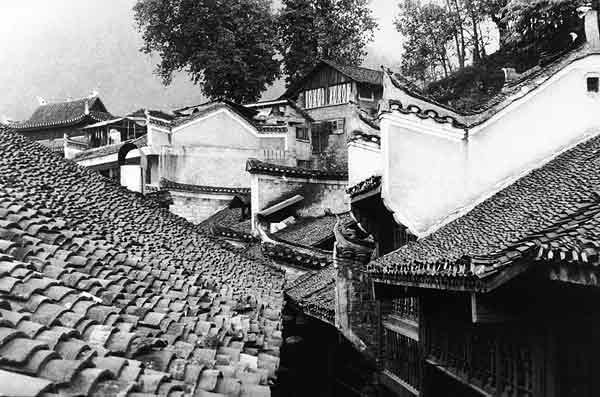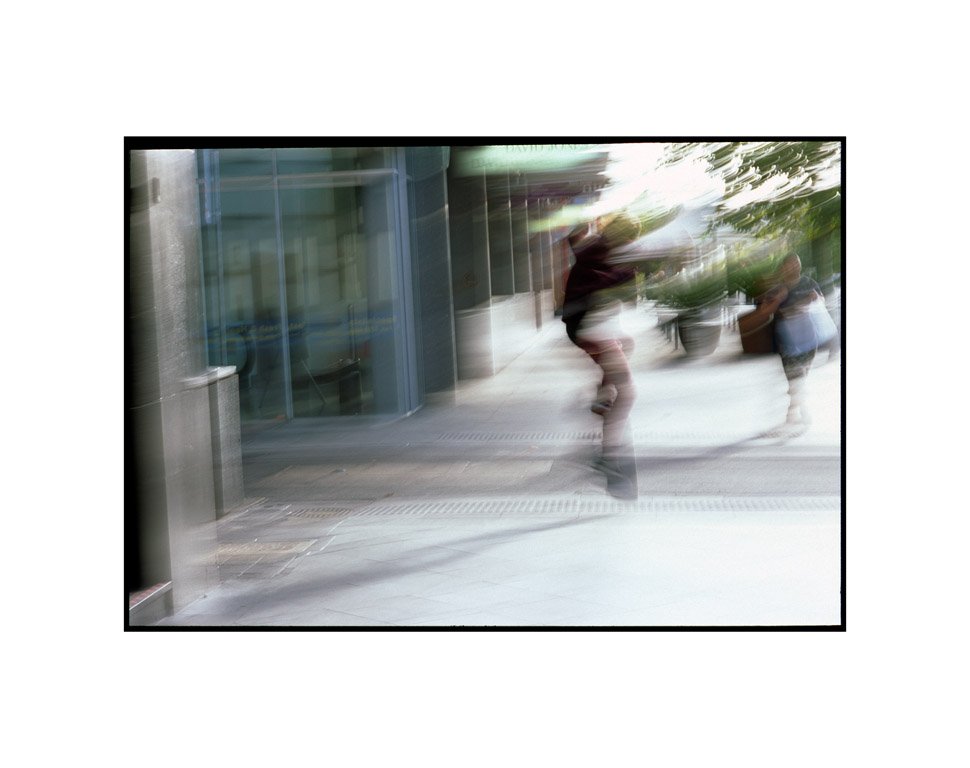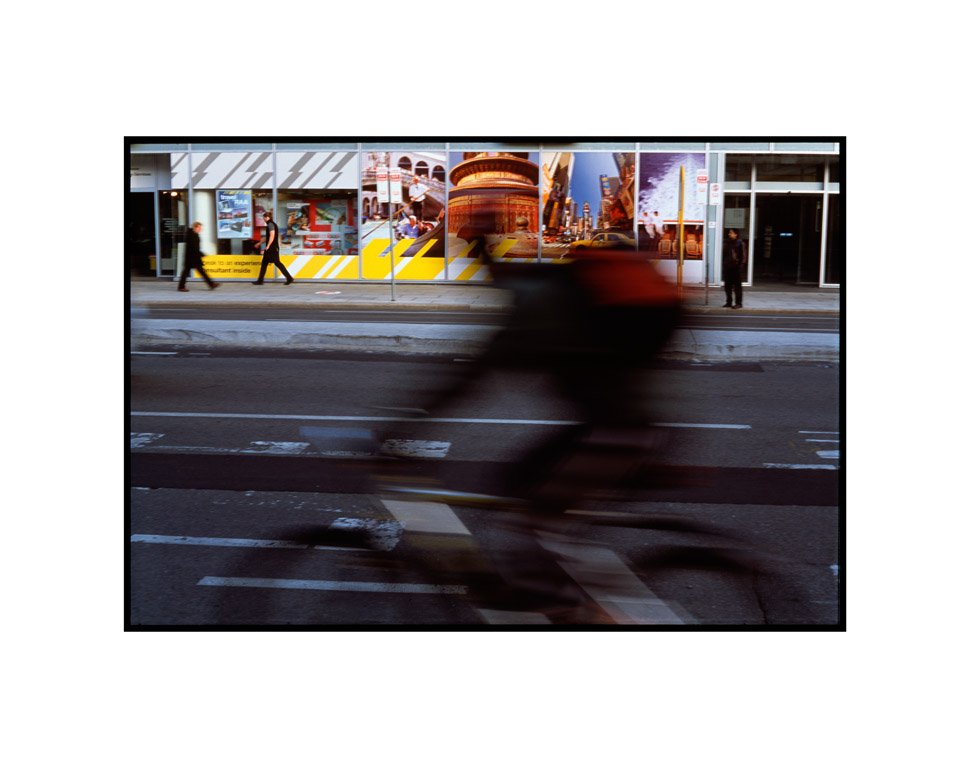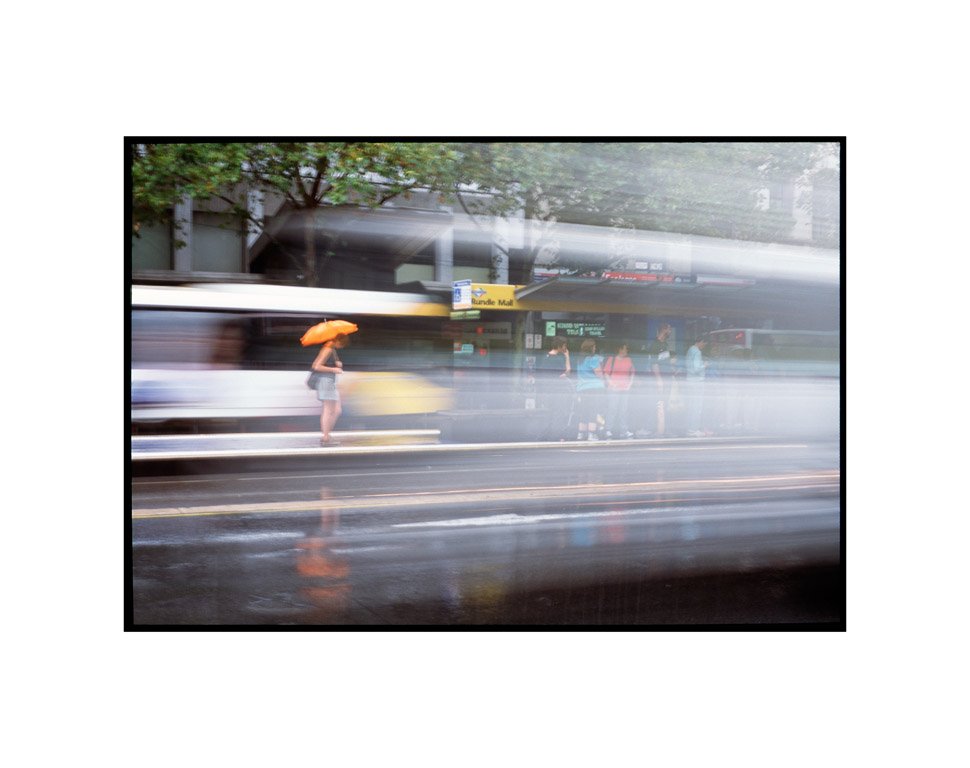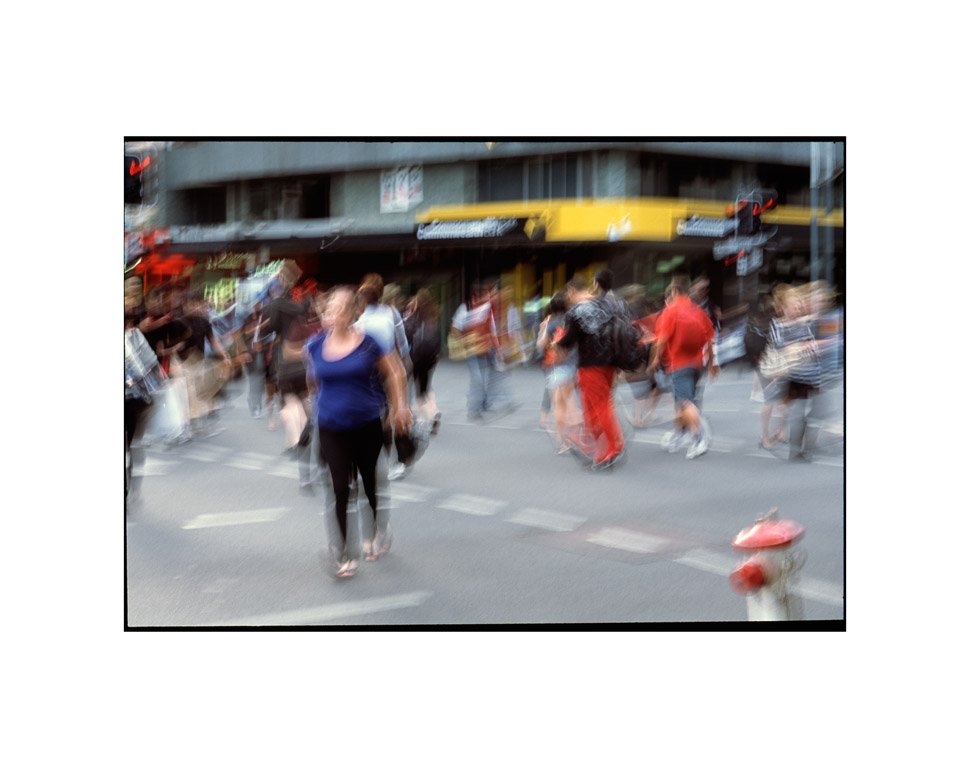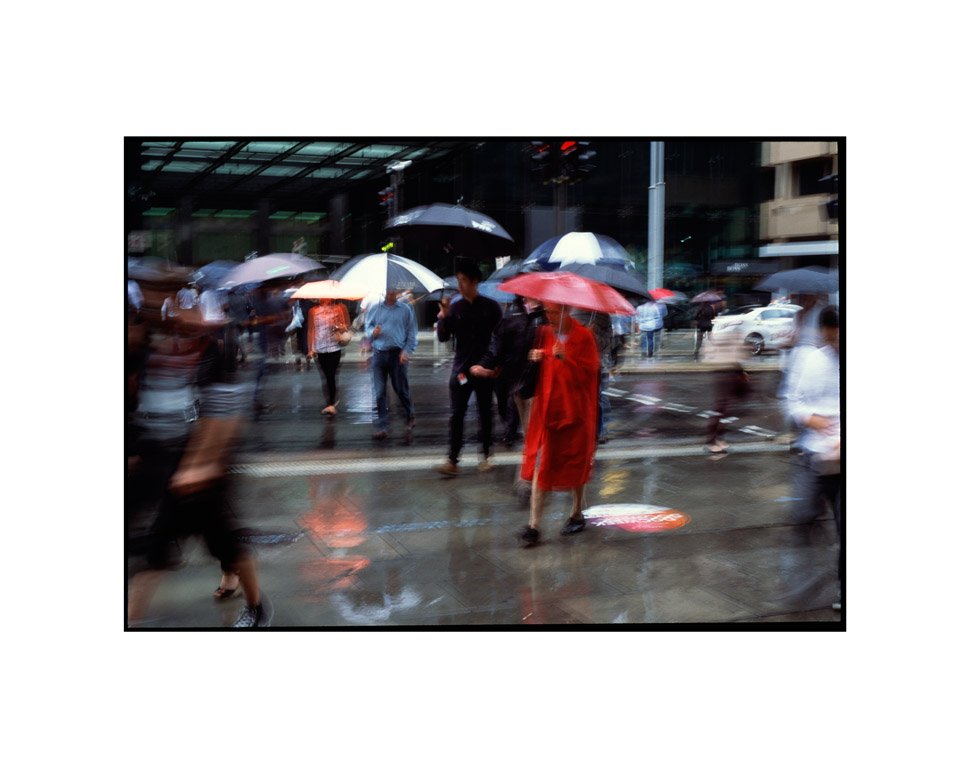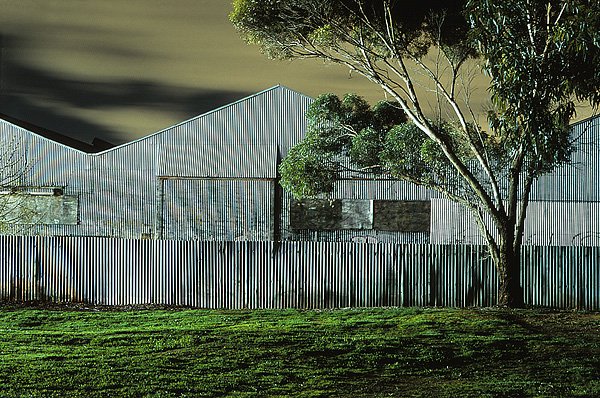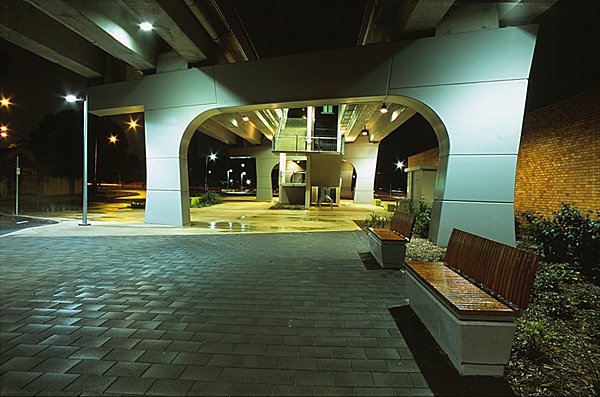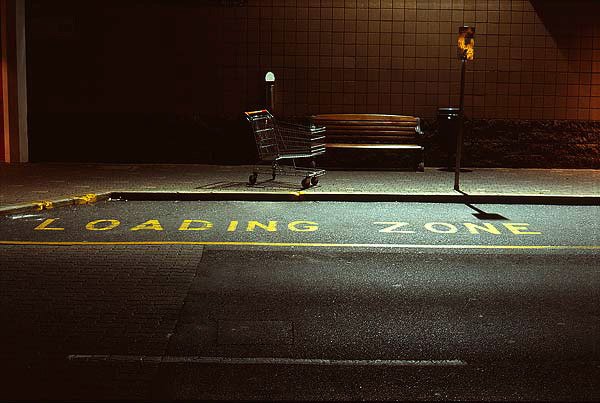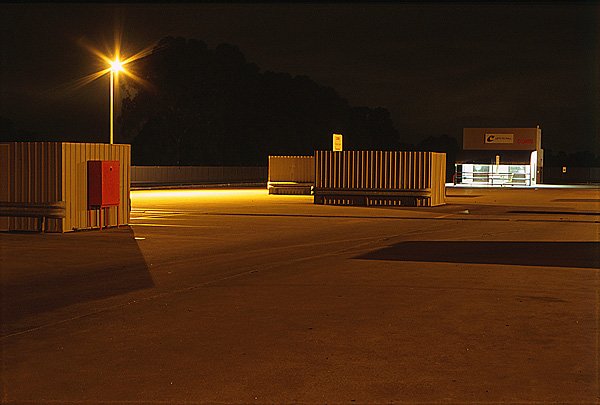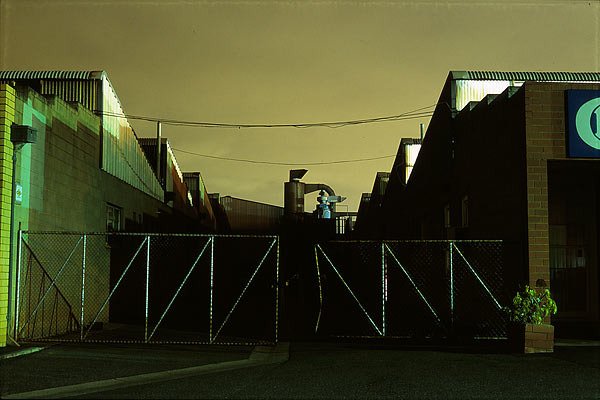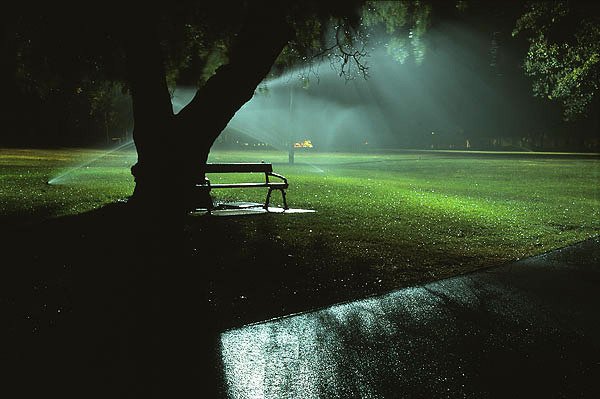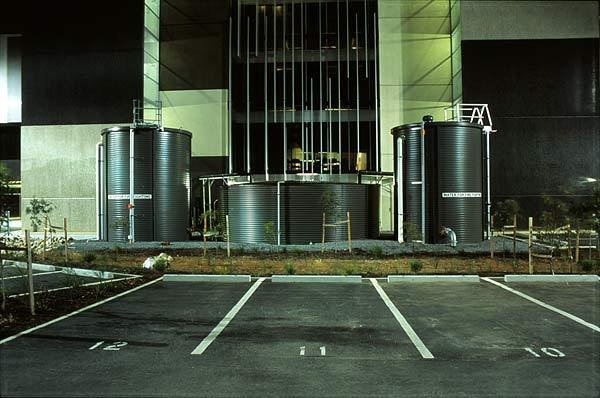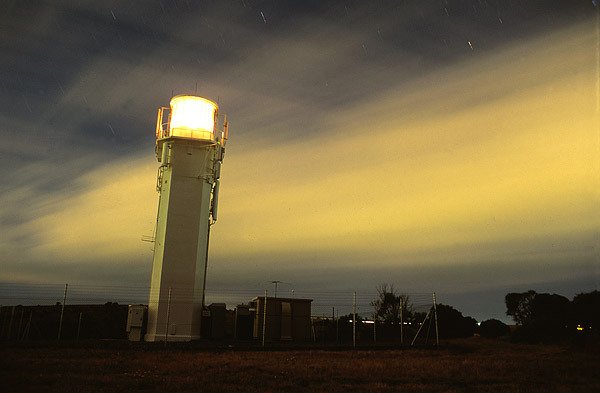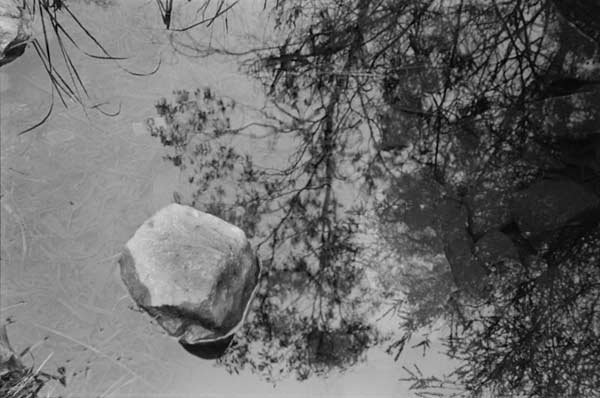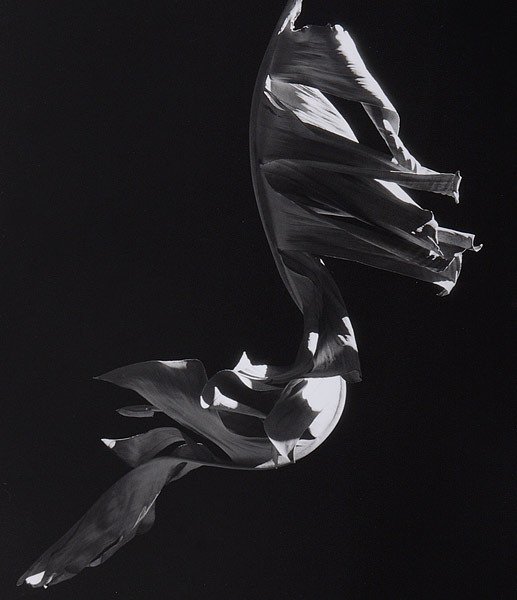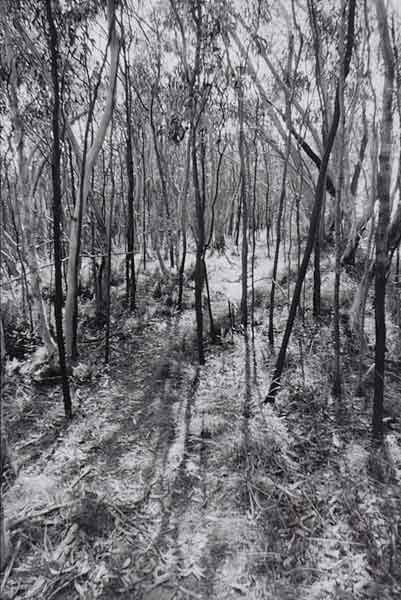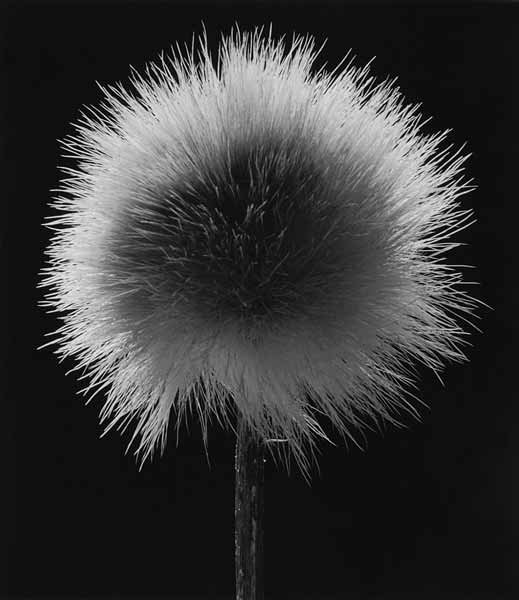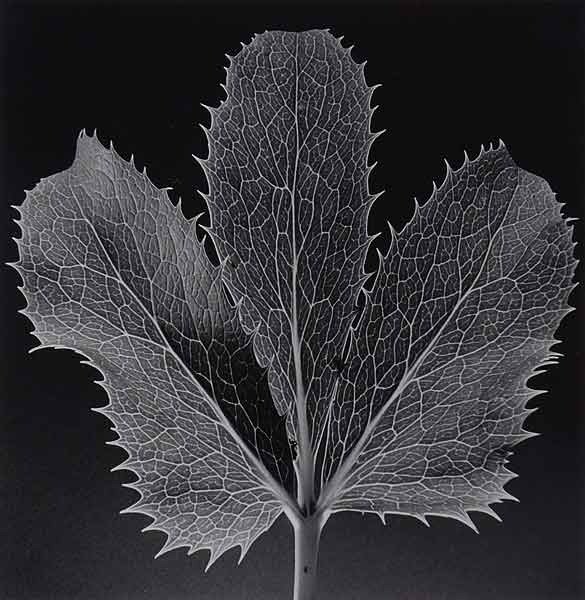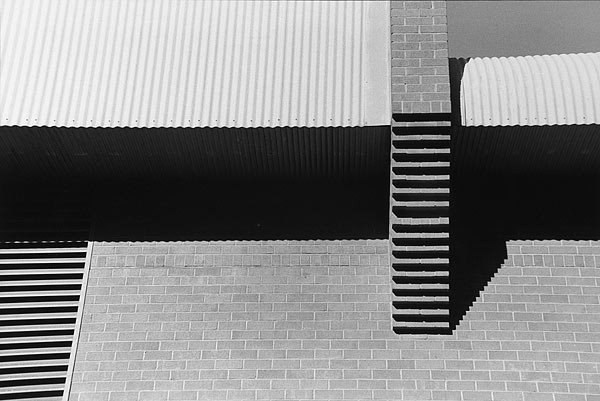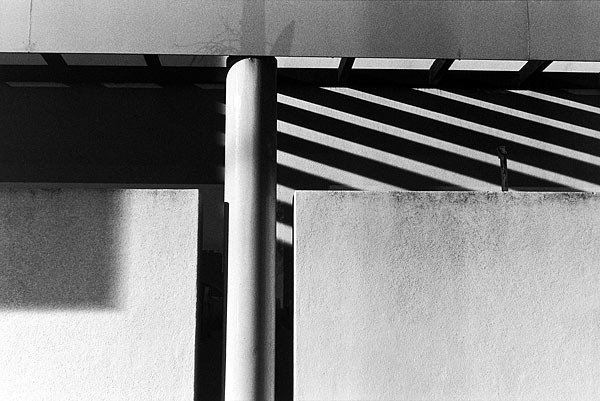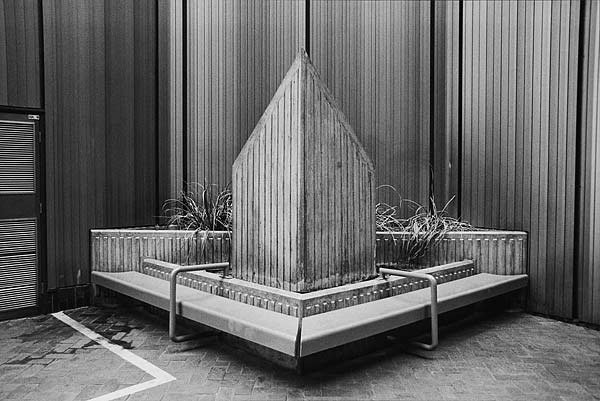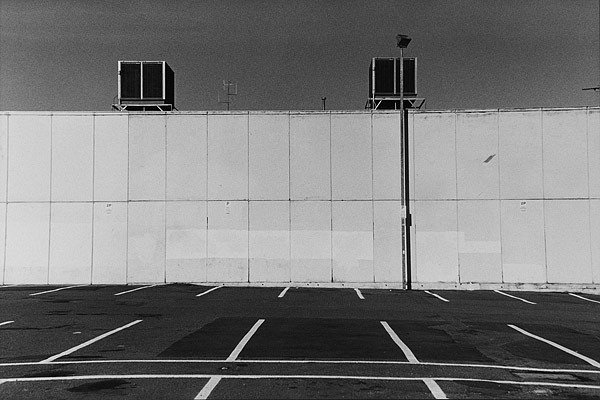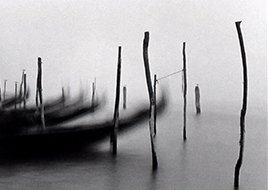(More than) 10 Questions: CCP Lecturer Mark Goddard
Today’s chapter is a very early former student who of course now teaches here. His past relationship has seen him wear many different hats at the CCP; student, front of house, darkroom and studio gallery committee member, exhibition installer, manager and maintenance person (most of us actually still do this out of class time). It’s a pretty inclusive and exhausted way to have worked your way around life here!
Mark Goddard first walked through the door at the Stepney CCP in 2001 doing two subjects as an Introduction to Photography / Camera 1 student. He then fairly meticulously worked his way through 2002 earning his Certificate II in Creative Photography. In this time Mark was photographed for an advertising feature on the CCP as a Camera Portfolio 2 student:
Mark returned in 2003 to commence his Certificate IV in Creative Photography which was superseded by the current Certificate IV in Photography about the same time we completed our move to Marleston around 2004. In this time with his studies here, Mark especially distinguished himself with darkroom work which he became infatuated with and to this day, he still works with film – certainly a person after my own heart.
Very early on in his student days I recall when Mark discovered the images of Paul Caponigro and became transfixed on this man’s work – I believe this was when he was studying Camera 2 and naturally I encouraged him to send the guy an image and a note of thanks for the experience… he deliberated, and deliberated, crafting a “note” of the highest order to this “treasure” of Black and White photography.
Eventually (I think about six months later), Mark was ready and off the print went with his note of approbation, only to receive a reply from “God” himself about three months later, with a very sincere note of gratitude along with a signed monograph of Caponigro’s images much to Mark’s absolute delight – it is still a cherished possession in his library and certainly illustrates a lesson learned.
By the time we’d moved to Marleston, our current location, Mark was well and truly working around the CCP as a studio assistant while
continuing his studies into the Diploma program amongst other free-ranging duties such as facilitating the first fit of the new-look CCP before we’d made the move, finally settling into his current lecturing position soon after graduating with his Diploma in 2006. In the 10 years Mark has been on the floor, he’s added yet another dimension to his skill sets and has become a very valuable and popular member of the teaching staff – that’s not only 10 years of teaching the great unwashed so to speak, but collectively Mark has spent fully a third of his life associated with the CCP and he’s not going away in a hurry if I have anything to do with it!
We’ve shared a lot of beers over the time and done a lot of things together. Mark has seen Aaron grow into the reprobate he is now and probably facilitated some of the behaviours, while I’ve observed Mark become the good friend and dedicated artist and educator he now is. With that I hand you over to Mark Goddard and his answers to (more than) 10 questions about Art, Life his Inspirations and Aspirations… Mark Goddard, come on down.
(MORE THAN) 10 QUESTIONS: MARK GODDARD
What first interested you, or made you fall in love with photography?
Photography got its hooks into me as a teenager when I developed my first roll of film in high school. Learning how to use the camera happened over a number of years, but it was the desire to properly document the places I travelled that made me better understand the possibilities of photography.
Why did you choose to study at the CCP?
I wanted to see how much I could learn about photography beyond self-tuition. The CCP offers flexible learning options, which agreed with my circumstances at the time. I knew the courses on offer would engage me and I could grow as a photographer.
Mark's "A Short Walk in China" series, a few images of which are above, was one of the earlier bodies of work he was pretty happy with. Note (reading the tea leaves a bit) an early example of street photography which is a current passion, and an image perhaps referencing a favourite Michael Kenna photograph of Venetian gondolas.
Are you making personal work?
I have spent the last five years almost exclusively doing street photography. Natural and urban landscapes was how I started out, so I decided to go to the other extreme and make images about the people I see on the street and the interactions and dynamics that can be captured.
I’ve recently returned to photographing natural and urban landscapes, largely because of the other hat I wear as a landscape designer.
Mark's "A Short Walk in China" series, a few images of which are above, was one of the earlier bodies of work he was pretty happy with. Note (reading the tea leaves a bit) an early example of street photography which is a current passion, and an image perhaps referencing a favourite Michael Kenna photograph of Venetian gondolas.
Are you making personal work?
I have spent the last five years almost exclusively doing street photography. Natural and urban landscapes was how I started out, so I decided to go to the other extreme and make images about the people I see on the street and the interactions and dynamics that can be captured.
I’ve recently returned to photographing natural and urban landscapes, largely because of the other hat I wear as a landscape designer.
Mark's beautiful and contemplative "Nocturnal" exhibition was celebrated with a fantastic opening night at Murray Bridge Regional Gallery in 2011.
How has photography changed since you commenced your studies?
The biggest change is the growth of digital vs the traditional film process. Digital provides the comfort of instant feedback and easy access post production. Film photography is on the way back, which is great for those who prefer the hands-on approach using chemical processes.
How has photography changed your life?
It’s made an immense difference. My life before photography was all about sport and physical ability, personally and career wise. Through photography, I have realised another side of who I am beyond just being physical. The creativity involved in finding interest in places otherwise overly familiar to me has been terrific. I also feel I have become very tuned in to what makes a photograph work or not work.
Being a photography lecturer at the CCP has given me confidence to speak comfortably in front of groups of people. It’s also defined a greater understanding of a broad range of photography styles and what makes for a compelling photograph. My photographic eye has given me very good visual and spatial intelligence, which informs my landscape design practice.
How have you changed since you were a student?
It’s been 16 years since the beginning of my studies at the CCP and a lot has changed. I have two careers that complement each other which I continue to develop further. (Pardon the film pun).
Which photographers - past or present - have been major influences on your work?
The two I respond to most are Paul Caponigro and Michael Kenna. Both are masters at capturing images in the urban and natural landscapes. I connect with every part of their practice from using traditional film and printing, to the spaces, images and compositions themselves.
Who are the people who have shaped your work and career?
A lot of people have helped shape my journey. The students I teach at the CCP are as equally as important as they are all very passionate about their pursuits in photography, which inspires me too.
Is there a person (from anywhere, dead or alive) you admire most?
Michael Kenna. His work helped me define a deeper understanding of my own work. His compositions are outstanding. A lot of his work has a very strong element of time in them using long exposures. His Japan series has been the most engaging for me. The minimalism the work inspires is sensational.
Is there one iconic image which has most impacted on you and your work?
There are two. The first I saw in my first term of study. It’s an image by Paul Outerbridge Jr titled ‘Cheese and Crackers’. My limited conceptual understanding of what made a photograph compelling was at odds with the subject matter. I visually connected with the ordered layout and began to understand the importance of lighting, composition and concept.
The second image is by Michael Kenna. I found this image ‘Gondolas I, Venice, Italy’ absolutely captivating with the contrast of the blurred gondolas bobbing up and down on the tide against the stillness of the poles they’re berthed against. Whilst lecturing night photography in Pt Adelaide, I came across a potential scene that I directly attribute as being inspired by this Michael Kenna image. I decided there and then to do a night photography series with the image ‘Pt Adelaide Inner Harbour’, (third image in the series) being one of the last I photographed for the ‘Nocturnal’ work.
gondolas i, venice, italy
michael kenna
Any surprises - good or bad - as you have progressed in your career?
No surprises really, other than realising how much photography has influenced my understanding of what a great landscape design is or can be. For example, a lot of gardens don’t follow any compositional rules which underutilises the potential to value add and look great.
Do you have any advice for student photographers?
Be passionate about the style of photography you’re interested in and pursue it relentlessly. Join the AIPP as a support network but also consider doing a business course for business practice, pricing and marketing purposes.
What is the best job you've done since you've been working in the industry?
I don’t have a memorable job to mention. I prefer the long-term process of creating a body of work through conceptualising, photographing, editing then presenting. I enjoyed my ‘Nocturnal’ series the most as night photography was such a different time to explore.
Any funny anecdotes from your experience in the industry?
Not anything funny, but I’ve had interesting moments when caught photographing on private property. The situations never came to more than a brief confrontation before being asked to leave with tail between the legs.
What are your passions outside of photography?
Always loved cycling and bushwalking but don’t dedicate enough time as I am busy designing landscape gardens. I love to travel. My last trip to New York City involved street photography and photographing the ‘High Line’. This is an elevated garden almost two and a half km long and built on a disused train line that winds between buildings from W34th street to the Whitney Museum near W13th street.
To see more of Mark’s work, visit his website, follow his Instagram @mark_s_goddard.
His professional landscape design services also can be found at Mr Goddard Landscape Design with design and horticulture imagery on Instagram at @goddard_mr.



